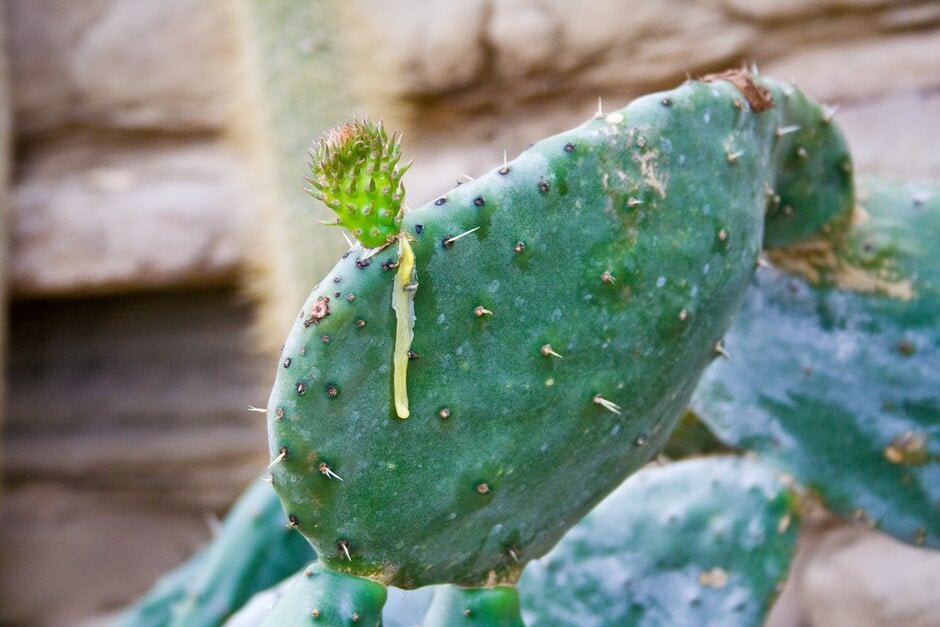Opuntia ficus-indica
Indian fig
A bushy, tree-like cactus with divided, spiny, flat, oblong or elliptic grey to green stems. Bowl-shaped yellow or orange flowers are produced from spring until summer, followed by purple, orange or red fruit
Size
Ultimate height
4–8 metresTime to ultimate height
10–20 yearsUltimate spread
4–8 metresGrowing conditions
Moisture
Well–drainedpH
Acid, Alkaline, NeutralColour & scent
| Stem | Flower | Foliage | Fruit | |
| Spring | Green Grey Silver | Orange Yellow | ||
|---|---|---|---|---|
| Summer | Green Grey Silver | Orange Yellow | Purple Red Orange | |
| Autumn | Green Grey Silver | Red Purple Orange | ||
| Winter | Green Grey Silver |
Position
- Full sun
Aspect
South–facing or West–facing
Exposure
ShelteredDrought resistance
Yes Hardiness
H2Botanical details
- Family
- Cactaceae
- Native to GB / Ireland
- No
- Foliage
- Evergreen
- Habit
- Columnar upright
- Potentially harmful
- Skin/eye irritant. Wear gloves and other protective equipment when handling Pets (dogs): Skin/eye irritant. For further information and contact numbers regarding pets, see the HTA guide to potentially harmful plants
- Genus
Opuntia can be creeping, bushy or tree-like cacti, usually with flattened, pad-like stem segments bearing spines and barbed bristles, and with funnel-shaped flowers followed by spiny, fleshy fruits
- Name status
Correct
- Plant range
- Mexico
How to grow
Cultivation
Under glass, grow in sharply-draining, peat-free, loam-based compost with added sharp sand, or a proprietary peat-free cactus compost. Provide full light at all times and allow compost to dry before watering during growth period in spring, summer and early autumn and apply a balanced liquid fertiliser three or four times. Withhold water and fertiliser in winter when dormant. See houseplant cacti and succulent cultivation for further advice
Propagation
Propagate by seed in spring. Sow after pre-soaking and keep at 21°C for germination. Root stem segments in summer. Handle segments with folded newspaper to avoid touching spines
Suggested planting locations and garden types
- Patio and container plants
Pruning
No pruning required
Pests
May be susceptible to scale insects and mealybugs
Diseases
Generally disease-free although in poorly drained, or wet soil, can be susceptible to root rots
Get involved
The Royal Horticultural Society is the UK’s leading gardening charity. We aim to enrich everyone’s life through plants, and make the UK a greener and more beautiful place.
